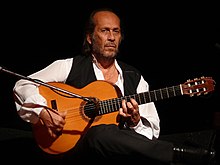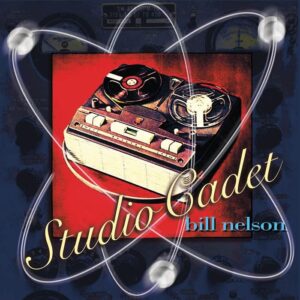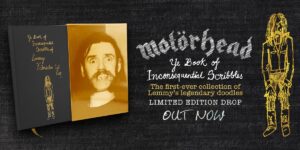Paco de Lucía, Flamenco Guitarist, Dies at 66

Paco de Lucía, who was born into a musical family and grew up to become one of the world’s greatest guitarists, mastering flamenco music and finding new audiences by blending it with jazz and other genres, died on Wednesday in Mexico. He was 66. His death was confirmed by a municipal official in Mr. de Lucía’s native city, Algeciras, on the coast of southern Spain.
Gaspar Armando García Torres, the Quintana Roo state attorney general, told Mexico’s Enfoque Radio that Mr. de Lucía had had a heart attack while on vacation at the Caribbean resort town of Playa del Carmen and died in a hospital, The Associated Press reported.
Mr. de Lucía established himself as a leading flamenco artist in the 1960s and ’70s, notably after forming a partnership with Camarón de la Isla, a singer who is widely considered to have revived and revolutionized flamenco in Spain. The duo released more than 10 records, both of classical flamenco and a fusion of rock and pop. Camarón de la Isla died in 1992.
With the backing of bongo players and an electric bass, Mr. de Lucía produced one of Spain’s most familiar tunes, a rumba called “Entre Dos Aguas” (Between Two Waters), which was part of an album released in 1973, in the final years of the Franco dictatorship.
Mr. de Lucía was renowned for “the intensity of his concentration” and for the way he had “pushed flamenco’s traditional roots both backward and forward,” Ben Ratliff wrote in The New York Times in 2004 in a review of a de Lucía performance, with singers and a rhythm section, at the Beacon Theater in Manhattan.
Mr. de Lucía’s virtuosity was grounded in age-old flamenco techniques: hard-edge strumming, breakneck runs with every note sharply articulated, a touch that could be feathery or imperious, suspenseful phrasing and, most of all, a volatile sense of dynamics and drama.
He opened flamenco’s traditional boundaries to rhythms, harmonies and instruments from the wider world. Even when he was playing a tango, using jazz chords or backed by an electric bass, his music remained unmistakably and authoritatively flamenco.
“I am a purist within my aura of revolutionary, vanguardist or creator,” Mr. Lucía said in a 2004 interview with the Spanish newspaper El País. “I’m still a purist because I have always respected what I think is respectable. What I have is not the obedience the purists continue to have, but the respect for the essence, the old, the valid. Memory.”
He added: “What you do has to have credibility. No matter how far you go harmonically, no matter how crazy it seems, it has to smell and sound like flamenco.”
In the same interview, Mr. de Lucía said that the pressure to record frequently — something unknown to previous generations of flamenco performers — had compelled him to keep extending his music, “to keep growing and learning.” He insisted that his prodigious technique was never an end in itself.
“You must have enough technical dominion to forget about it,” he said. “That is when you can begin to express yourself.”
He was born Francisco Sánchez Gómez in Algeciras on Dec. 21, 1947, and aspired to play the guitar from childhood after receiving his first lessons from his father. When he was 14, he won an international flamenco competition and shortly thereafter made his first recording, “Los Chiquitos de Algeciras,” with his brother Ramón, who also played guitar.
His Gypsy neighborhood inspired his stage name. It was full of children called Paco (short for Francisco), he said, so he was referred to as “the Paco of Lucía,” his mother’s name.
In the early 1980s he extended his longstanding collaboration with his brothers, Ramón and Pepe de Lucía, a singer, by forming a sextet with Jorge Pardo, Carles Benavent and Rubem Dantas, a Brazilian percussionist.
To modernize flamenco, the group introduced a new percussion instrument, the Peruvian cajón, a six-sided wooden box that they discovered while touring Latin America and that has since become a staple of flamenco music.
With Spain’s return to democracy, Mr. de Lucía increasingly spent time outside the country in the 1980s, often teaming up with leading jazz players, particularly the guitarists John McLaughlin and Al DiMeola. They toured worldwide, and their recordings included “Friday Night in San Francisco,” which sold more than a million copies.
In 1989 Mr. de Lucía performed at Carnegie Hall, where “his set of flamenco tunes and Andalusian melodies had the emotionally riveting quality of brilliant, impassioned conversation,” Stephen Holden wrote in his review in The Times.
In 2012, a double album of live concerts earned Mr. de Lucía his second Latin Grammy Award for best flamenco recording. His first came in 2004 for “Cositas Buenas” (Good Little Things), which features another major flamenco guitarist, Tomatito.
Mr. de Lucía received some of Spain’s most prestigious awards, including the Gold Medal of Merit in the Fine Arts in 1992 and the Prince of Asturias Award for the Arts in 2004.
Information about his survivors was not immediately available. A statement by his family, published in Spanish newspapers, said, “Paco lived as he wished and died playing with his children beside the sea.”
His death brought forth tributes in Spain and elsewhere. José Ignacio Wert, Spain’s culture minister, called Mr. de Lucía “a unique and unrepeatable figure.” The pianist Chick Corea said in a statement, “Paco inspired me in the construction of my own musical world as much as Miles Davis and John Coltrane, or Bartok and Mozart.” And José Mercé, a flamenco singer, said that nobody would reach Mr. de Lucía’s level in the next 200 years.
Source: The NY Times


